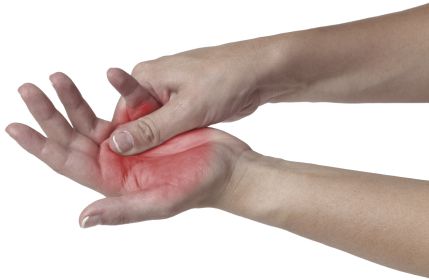Top Class Actions’s website and social media posts use affiliate links. If you make a purchase using such links, we may receive a commission, but it will not result in any additional charges to you. Please review our Affiliate Link Disclosure for more information.

Symptoms of Stevens Johnson Syndrome often lead to pain, eye problems, secondary skin infection, and organ damage.
If the rash-like symptoms of Stevens Johnson Syndrome cover less than 10 percent of a person’s body surface area, it is considered to be a milder form of SJS.
A more severe form of SJS is called Toxic Epidermal Necrolysis, or TEN. When SJS progresses to cover more than 30 percent of a patient’s skin, it is reclassified as TEN.
The significance of this classification is simply to distinguish between the extent and severity of the illness, as TEN is a more dangerous condition with a higher fatality rate. The space between this, where 10 to 30 percent of the skin is affected, is overlap between SJS and TEN.
Recovery from symptoms of Stevens Johnson Syndrome can take from weeks to months. It can also be a life-threatening condition. Indeed, between five and 15 percent of SJS conditions lead to fatalities.
TEN is more dangerous—between 30 and 40 percent of patients die.
Stevens Johnson Syndrome has been linked as an allergic reaction with a variety of drugs. These drugs include, but are not limited to, the following:
- Phenytoin
- Carbamazepine
- Oxcarbazepine
- Valproic acid
- Lamotrigine
- Barbiturates
Symptoms of Stevens Johnson Syndrome have also been lined with a variety of genetic factors, racial, sexual, and age factors, and others.
Symptoms of Stevens Johnson Syndrome
Common symptoms of Stevens Johnson Syndrome usually introduce as flu-like. They may include the following:
- Cough producing thick, pus-like mucous
- Headache
- Malaise
- Skin pain
- Hives
- Joint pain
- Rash
Treatment of Stevens Johnson Syndrome
In general, SJS patients are usually tended by treating symptoms of Stevens Johnson Syndrome. Symptomatic treatment of SJS means that, since rash symptoms are so burn-like with skin separation, the condition is often treated very similarly to severe burns in a hospital. Infection is the biggest risk.
Even after a patient has been treated, symptoms of Stevens Johnson Syndrome may persist. Continual symptoms may include:
- Inverted eyelashes
- Photophobia
- A burning sensation in the eyes
- Watery eyes
- Corneal and conjunctival neovascularization
- Blindness
In most cases of Stevens Johnson Syndrome and TEN, patients are left with permanent scarring. SJS can cover a large portion of the body, so the scarring can be both widespread and disfiguring.
Stevens Johnson Syndrome Lawsuits
Many people taking these drugs linked with symptoms of Stevens Johnson Syndrome are not aware of the serious side effects which, though unlikely, do occur.
If you or someone you know has experienced symptoms of SJS or TEN while using any of these drugs and believe you were not adequately warned about the potentially severe side effects, you may have cause for filing a Stevens Johnson Syndrome lawsuit for medical and financial damages.
Do YOU have a legal claim? Fill out the form on this page now for a free, immediate, and confidential case evaluation. The Stevens Johnson Syndrome attorneys who work with Top Class Actions will contact you if you qualify to let you know if an individual lawsuit or class action lawsuit is best for you. [In general, SJS lawsuits are filed individually by each plaintiff and are not class actions.] Hurry — statutes of limitations may apply.
ATTORNEY ADVERTISING
Top Class Actions is a Proud Member of the American Bar Association
LEGAL INFORMATION IS NOT LEGAL ADVICE
Top Class Actions Legal Statement
©2008 – 2024 Top Class Actions® LLC
Various Trademarks held by their respective owners
This website is not intended for viewing or usage by European Union citizens.
Get Help – It’s Free
Help for Victims of Stevens Johnson Syndrome
If you or a loved one were diagnosed with Stevens Johnson Syndrome (SJS) or toxic epidermal necrolysis (TEN) after taking a prescribed or over-the-counter medication, you may be eligible to take legal action against the drug’s manufacturer. Filing an SJS lawsuit or class action lawsuit may help you obtain compensation for medical bills, pain and suffering, and other damages. Obtain a free and confidential review of your case by filling out the form below.
An attorney will contact you if you qualify to discuss the details of your potential case at no charge to you.
Please Note: If you want to participate in this investigation, it is imperative that you reply to the law firm if they call or email you. Failing to do so may result in you not getting signed up as a client, if you qualify, or getting you dropped as a client.
Oops! We could not locate your form.












